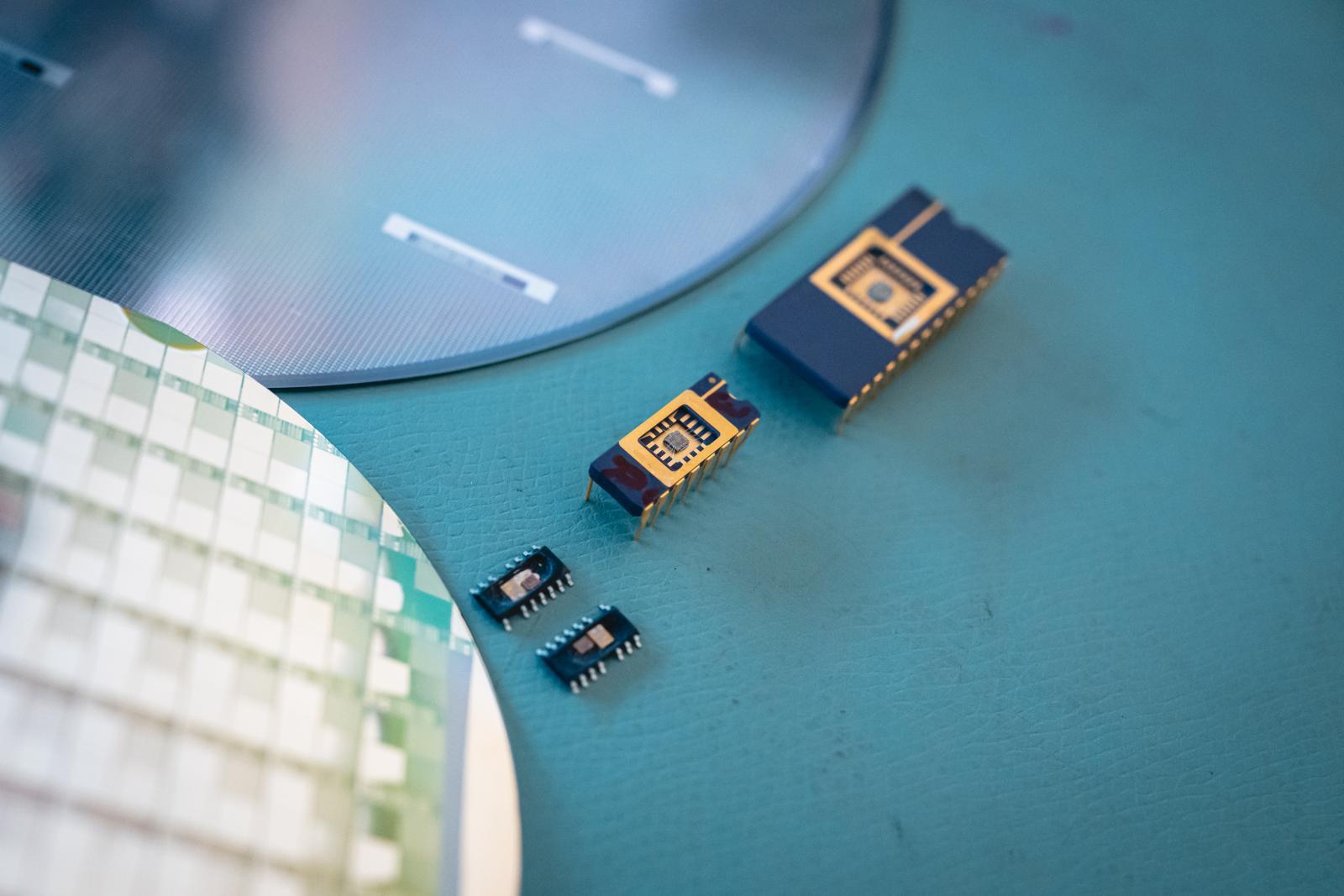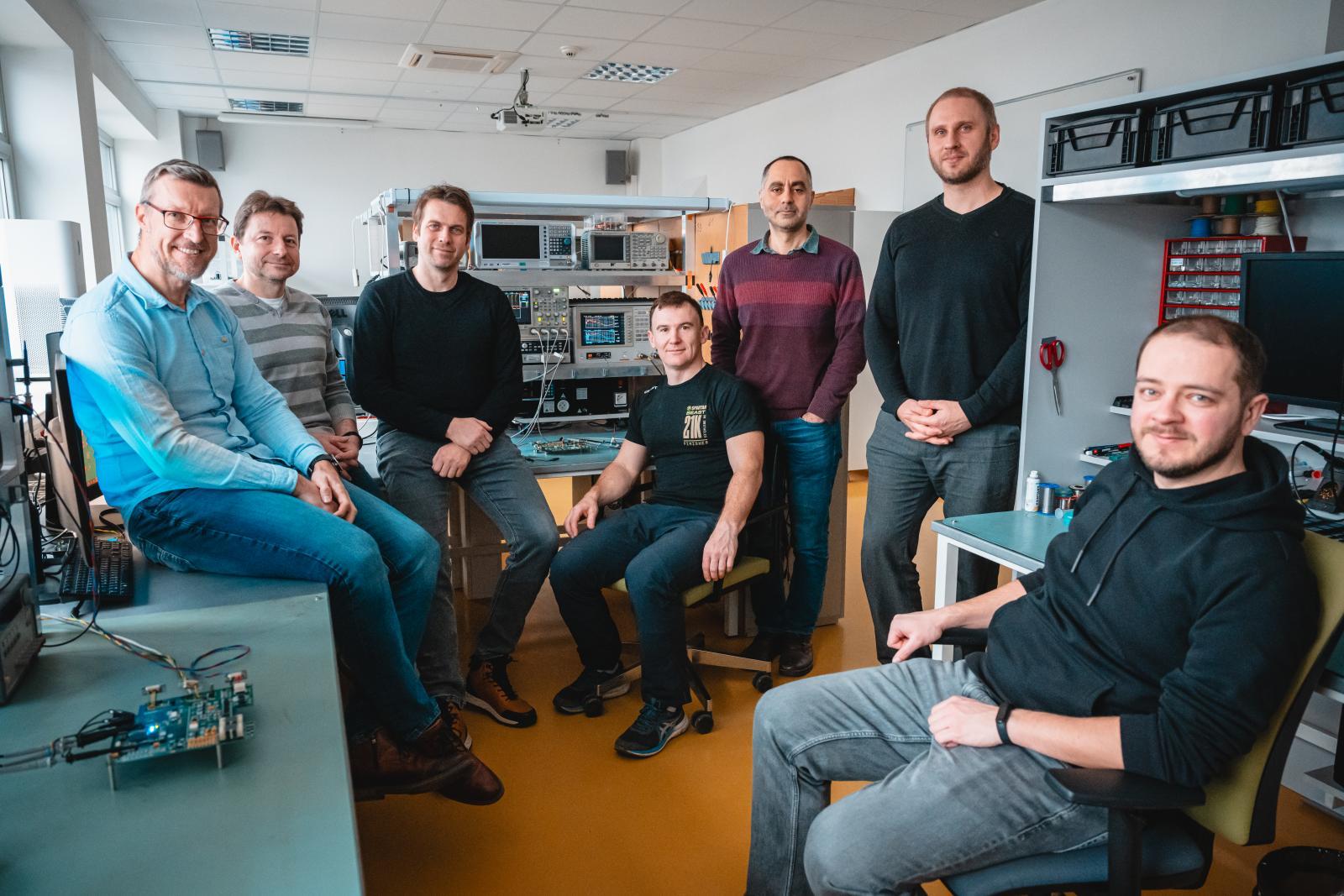At its December meeting, the Brno City Council supported the project "Semiconductor Competence of Brno" of the Czech National Semiconductor Cluster (CNSC). The project will receive a subsidy of CZK 2 million from the city and consists in strengthening the position and competence of the Czech Republic in the semiconductor value chain, which includes complex activities and strategies. The CNSC brings together experts, companies and institutions in the Czech semiconductor value chain. Founding members of the cluster also include Brno University of Technology (BUT), which educates the future generation of engineers in this field at the Faculty of Electrical Engineering and Communication (FEEC).
Different types of chips designed at the Department of Microelectronics at FEEC BUT and manufactured within the Europractice project in Belgium at IMEC company | Autor: Jakub Rozboud
"This year will be very important in terms of further development of semiconductor technologies, because a new design and training center for chips will be opened in Brno, in cooperation with Taiwanese partners," says Jiří Háze, head of the Department of Microelectronics at FEEC BUT, who is currently also vice-president of the board of directors for education and research in the Czech National Semiconductor Cluster (CNSC). For scientists and students from BUT, the connection with the CNSC represents a huge opportunity. The BUT has become a co-creator of the future shape of the Czech semiconductor industry thanks to the fact that the CNSC is part of Silicon Europe, the European Cluster Alliance for Innovative Electronic and Software Technologies, which represents the highest possible platform in this field in Europe.
Part of the team of the Department of Microelectronics (from left): Jiří Háze, Roman Prokop, Lukáš Fujcik, Michal Pavlík, Fabian Khateb, Vilém Kledrowetz, Vojtěch Dvořák | Autor: Jakub Rozboud
Cooperation with experts from industry in theoretical and practical teaching of microelectronics is already common at FEEC BUT. Part of the study is also given in the top equipped laboratories of the so-called clean rooms of CEITEC BUT, where each student can make their own chip. "In addition to theory, students will gain practical experience in working with semiconductors, which is very welcome by industrial partners. In the state-of-the-art research facilities, they will learn to work with equipment that enables the step-by-step production of a complete semiconductor chip. This is a very individual and costly training process, but one that is very important for our graduates in terms of gaining real-world experience for future job. That is why we are currently planning an extensive update of our current study programmes. A new study programme called Chip Design and Modern Semiconductor Technology is under preparation process, which will be practice-oriented so that we can even better capture current and future trends in the field of semiconductors, and even more closely adapt the teaching to current industry requirements," says Jiří Háze.
The Department of Microelectronics is not only an active player at the national level. The scientific team led by Jíří Háze is currently involved in 3 international projects aimed at increasing European self-sufficiency in semiconductor technologies and applications. The work of the department thus goes hand in hand with the implementation of the European Chip Act. The great news from earlier this year is also the fact that FEEC has managed to add another project to its family of semiconductor projects. This is the Chips of Europe project in cooperation with five European universities. The project is aimed at increasing professional competences in the field of curriculum innovation and will support, for example, microcertificates. These are intended for students who complete a course and receive a micro-certificate for which they earn credits at their home university, but corporate employees can also be trained. The project will also make it possible to target more work with secondary and primary schools. The aim is to bring science closer to children, to generate more interest in studying technical subjects and possibly to help retrain teachers themselves.